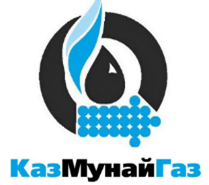Modular refinery
Missory together with its Group has been designing, manufacturing, assembling, commissioning and
starting "turnkey" modular refineries for over 20 years.
It also ensures and guarantees the training necessary for the management of the plant to its
customers.
We have built refineries operating in Eastern Europe and Asia on the basis of an innovative proprietary technology, covered by a paten
Our 7 pillars

-
Refining of crude oil, using the "Vacuum" technology, which allows to obtain the fractionation
of the various derivatives of crude oil with maximum temperatures of 100/120 °C using as fuel
the gas produced by the same crude oil that must be refined. Traditional "Fractionation Tower"
or "Cracking" refining systems require temperatures ranging from 250/300/400/600 °C and use
liquid fuels. Then they consume part of the fuels that are produced to power the process,
reducing the percentage of outgoing carburant. The plants, patented by us, are modular, with a
distillation capacity ranging from 1/3/5/10,000 barrels/day up to 150,000 barrels/day (and
more), to obtain the production of:
- Gas (which we use to produce the energy necessary for the operation of the plant).In all plants in use today, the gas is released into the atmosphere and burned on torches, creating pollution. This is not the case with our plants, where the gas is recovered and used to produce the energy necessary for the process of refining;
- Diesel type Euro 4, 5, 6 (D 1 / D 2);
- Gasoline 98 octane and above, including the production of Gasoline-Aviation for piston aircraft engines;
- Kerosene (or white gasoline) for helicopters and, after desulphurization, JP Jet Propellant / Jet Fuels (JP5 / 8/54);
- Lubricating oils for engines;
- Solvents for Industry;
- Heavy Oil (Mazut) and, after desulphurization, fuels for ships, and fuel for generator sets for the production of electricity etc.;
- Bitumen to produce asphalt and for waterproofing use.
- Plant for the production of Bitumen, patented by us, suitable for the construction of road asphalt and waterproofing;
- Desulphurization plant to eliminate Sulphur according to Community legislation, to obtain high-octane gasoline; JP Jet-Fuel, Jet-Propellant; Fuels for ships desulphurizing the Mazut;
- Flexy tanks made with High Resistance Polymers, equipped with pumps for filling and rapid emptying, suitable for the containment of carburant, drinking water, liquid food etc. They can be placed above ground, under the ground (buried); under sea water; in the depths of ports to provide water or fuel to ships without occupying large outdoor spaces; secret and strategic reserves in the territory to supply the armed forces with fuels, water and lubricating oils; also placed under the bed of rivers and streams. They resist temperatures ranging from - 60 °C to + 90 °C. They are protected externally by reflective material - reflector to repel the sun's rays. They are guaranteed for 25 years. The capacity is 250,000 liters for each tank (250 cubic meters). They can be placed in large numbers to hold up to many million liters. They are equipped with pump groups for quick filling or emptying.
-
Other products
The refinery is also able to produce the following products:
1- Fuel additives, including anti-knock agents;
2 - Lubricating oils for engines;
3 - Solvents for industries (paints, perfumes, etc.);
4 - Calcium sulphate.
-
Ecological process
Our refineries have a totally ecological process because they do not emit any emissions into the environment. The gas normally released into the environment or burned in a torch, the so-called "gas flaring" typical of traditional technology, if improperly managed can emit methane, sulfur dioxide, other sulfur compounds and other volatile organic compounds even to aromatic hydrocarbons (benzene, toluene, xylenes) and benzopyrene, known to be carcinogenic.
In our process, however, gas is used in boilers to power the refining process. No sulphur dioxide or hydrogen sulfide, which is aggressive to the environment and dangerous to human health, is therefore emitted. -
Fire risk prevention
The risk of fire is a fairly frequent event that affects and has affected refineries in almost all countries of the world. The risk is in herent in the production process and is determined by explosions and fireballs that normally destroy the entire refinery or a large part of it.
With our refineries this does not happen thanks to the modularity of the plant. Each module has a production of 1,000 barrels/day and is spaced away from any other module. In the unfortunate event of a fire, this is contained to the module and does not propagate to all the others.
Our refineries have highly competitive prices and fast delivery time.
For example, a refinery of 10,000 barrels/day is delivered in just 5 months from the signing of the contract and payment of the deposit.
The modularity of the refineries allows for rapid installations, start-ups differentiated over time and a rapid rotation in the reuse of profits obtained from the activity to increase production capacity or build new refineries in other locations.
All African countries depend on fuel imports from abroad, even those that have large productions of crude oil, such as South Sudan, Congo, Tanzania or countries such as Kenya or Ethiopia importing refined fuels from 3 to 5 billion dollars a year.
Having its own refinery means a minimum saving of 30%, if the country does not have its own oil fields. In the case of refining its crude oil, the savings can be up to 60%.
Our process

A distinctive feature of this technology is the ability to process hydrocarbon raw materials with an
unlimited content of sulfur and sulfur compounds.
- The ideal raw material for processing and obtaining motor fuels are heavy gas condensates or light oils with a high content of light products. When using such raw materials, practically only high-quality motor fuels with high liquidity are obtained.
- At the same time, due to the same one-stage technology the composition of the refinery equipment and the capita) costs for its commissioning is significantly reduced, this leads to the achievement of the most favorable economic indicators.
Work system

- The feedstock - oil or gas condensate - is pumped from the feedstock tank under a pressure of 0.1 - 0.3 MPa into the tube space of a four-way heat exchanger, where it is heated to 60-80 ° C with heating oil with a temperature of 150 -160 ° C supplied from the tote tank. Further, the raw material heated to t 60-80 ° C is fed into a distillation column with bubble cap trays. The distillation column is mounted on a horizontal tote tank, in which a heat exchange element is mounted for the final heating of raw materials in the bottom of the column. Heating is carried out by a moduled liquid-fuel burner capacity of 0.5 MW.
- The distillation column consists of cap-type trays. A reflux exchanger is built into the upper part of the distillation column. Cooling and condensation of gasoline vapors in the reflux condenser is carried out by the process water supplied to the reflux condenser. The column top temperature is controlled by changing the amount of water supplied to the fractional distillation tube of the distillation column, through a vapor line, connected to a heat exchanger by a condenser installed vertically on a gasoline collector. Gasoline vapors are cooled in a heat exchanger-condenser, condense and drain into the collection of gasoline, from where the gasoline fraction is subsequently pumped out into the gasoline tank. The remaining heavy fraction - the stabilized bottoms residue - is pumped out of the bottom tote tank by a pump, through a two-section heat exchanger in which it is cooled with water to a temperature of 6070 C, into the furnace oil tank.
- Discharge of Bottom settlement water from a gasoline tank, as well as discharge of rainwater from the site of technological tanks is carried out into an underground tank, with subsequent removal by tank trucks. The installation meets all the requirements of sanitary standards for this equipment. The main source of harmful emissions into the atmosphere is a moduled liquid-fuel burner.
The advantages

- Absence of mother water.
- Reducing the content of oxygen in the air in oxidation gases.
- Increase in productivity on raw materials by 2-2.5 times.
- Reducing oxygen of air for oxidation by 25-30%.
- Reducing the output of black off-spec summer diesel.
- Reduced oxidation time
- Decrease in the temperature of the oxidation reaction 20-30 °C









